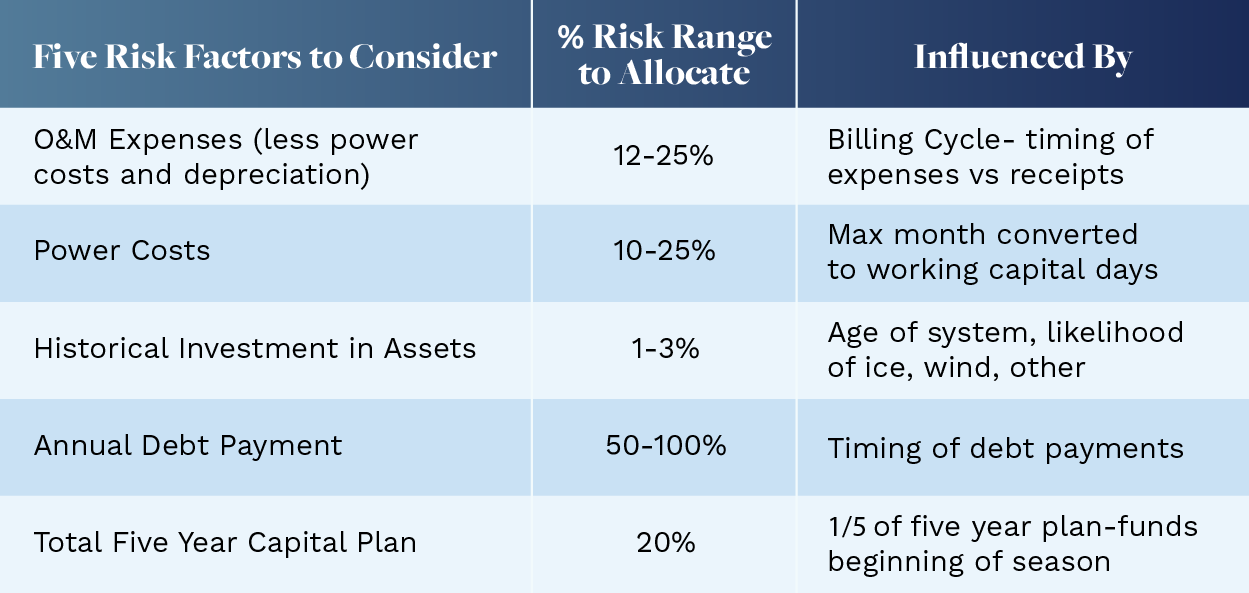Our industry has had no shortage of extraordinary events that have affected electric sales. In the last year utilities have faced rising power supply costs, unprecedented inflation, and rolling blackouts. Our systems also face yearly threats of hurricanes, wind storms, ice storms, or other weather related incidents. When looking at utility financial health and the risks faced, how do we determine how much cash is “enough” to keep in reserves?
Cash reserves ensure timely payments of operating expenses, debt service payments, and capital expenditures, but they also ensure funds exist for system improvements, reliability, and to provide a cushion in the face of an extraordinary event. Many utilities are tempted to set an exact target for this number, and we can see why.
However, UFS recommends defining a minimum amount of cash a utility should maintain in reserves versus a target amount.
Why define a minimum and not an exact target?
Instead of setting an exact target, setting a minimum number based on five factors that change over time is a more sustainable way to keep utility finances healthy. Depending on capital needs, the utility could require use of more funds in one year and need to build funds over others. Having an adequate cash balance limits the risk of requiring large, unexpected rate adjustments.
In addition, establishing a methodology to define minimum cash makes it easy for future leaders to follow suit. Once established, the minimum cash reserve often makes for healthier utilities.
How does your cash measure up?
In general, consider these five factors with your finances. Using these metrics will help to determine the minimum cash a utility needs at a given time.

Establishing a methodology such as a cash reserve policy that is adopted by the governing body will help maintain long term financial health. The five risk factors outlined above provide a base methodology for defining minimum cash, but every utility is different and may have additional risks that should also be considered. Other risk factors include, but are not limited to, customer concentration risk, exposure to power supply market fluctuations, or having a power cost adjustment mechanism. This formula can be updated each year with the budgeting process and identify a time-period to restore cash reserves if they fall below the established minimums. With the formula in place, the minimum recommendation won’t be affected by changes in leadership roles. UFS prefers this process to a set number because it is adaptive. A utility’s situation changes from year to year and the goals should change with it.


